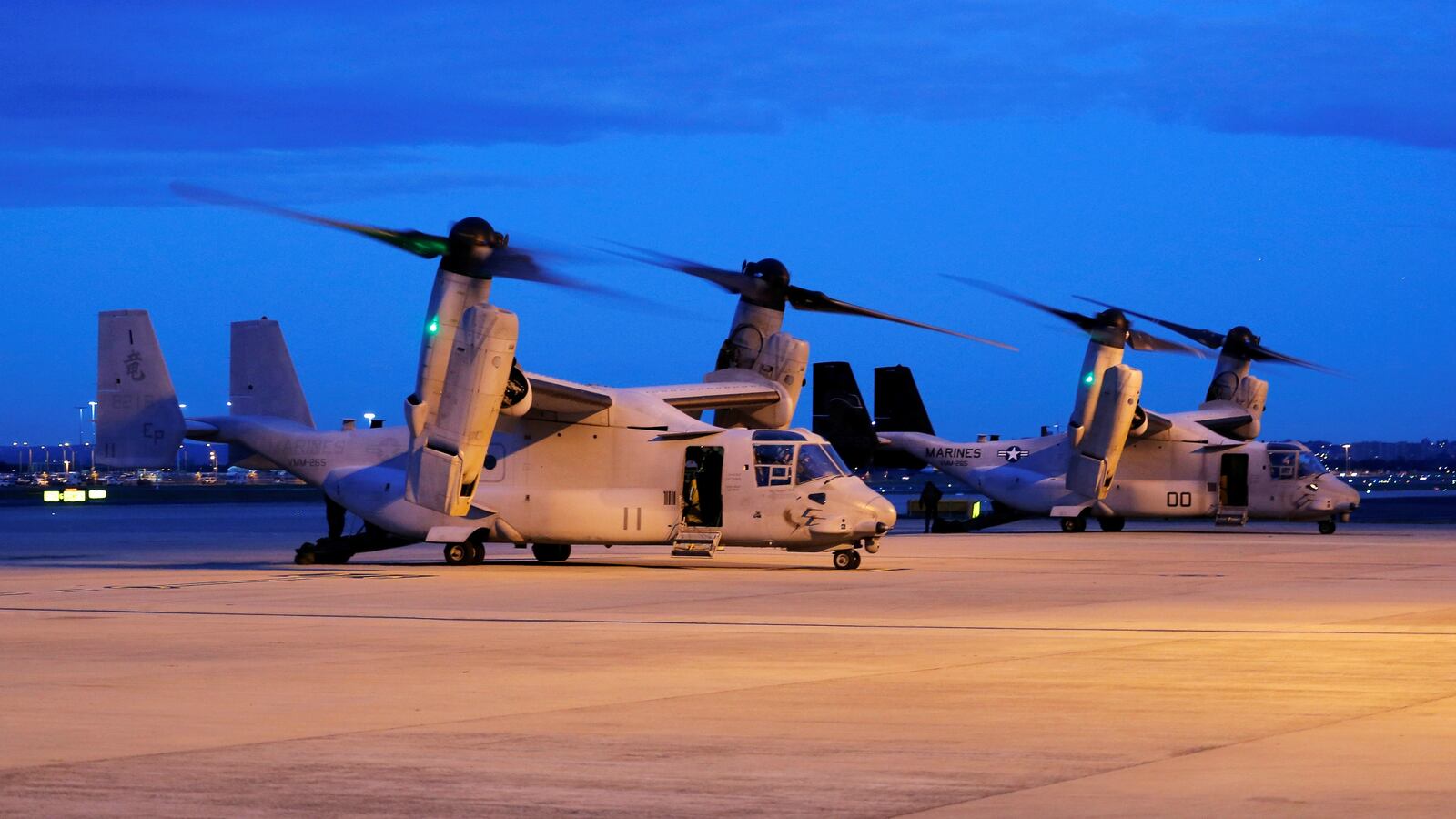In the aftermath of back-to-back fatal air crashes, the U.S. Marine Corps has told all of its flying squadrons to halt operations for a 24-hour period. But military and elected officials stressed that it will take more than a day to fix the Marines' deep training and maintenance problems.
Gen. Robert Neller, the Marine Corps' commandant, ordered the safety stand-down on Aug. 11 in order "to focus on the fundamentals of safe flight operations," according to an official release.
The stand-down affects around a thousand aircraft at bases all over the world, including some involved in air strikes on the Taliban and Islamic State. Each squadron can choose which day to pause its flights, as long as it's in the next two weeks. "No operational commitments will be impacted," the release stressed.
Lately, Marine flights have been anything but safe. On Aug. 5, one of the Corps' V-22 tiltrotor crashed off the coast of Australia, killing three people. In early July a Marine KC-130 aerial tanker plummeted to the ground in Mississippi, claiming the lives of all 16 passengers and crew.
Both mishaps are under investigation.
Marine aircraft have been involved in 11 major accidents in the fiscal year that ends in September. That's two more than in the 2016 fiscal year. Twenty-one Marines have died in air crashes in 2017. Just eight died the previous year. Marine aviation is in a "state of crisis," Sen. John McCain, an Arizona Republican and chair of the Senate Armed Services Committee, warned in a January report.
The Marines agree. "Current readiness, at the squadrons and for Marine aviation as a whole, is below the level required," Lt. Gen. Jon Davis, then the Corps' top aviation officer, wrote in the 2017 edition of the Marines' annual aviation summary, published in March.
"Approximately 80 percent of our aviation units lack the minimum number of ready basic aircraft for training, and we are significantly short ready aircraft for wartime requirements," Gen. Glenn Walters, one of the Marines' assistant commandants, told the House Armed Services Committee in February.
In a sign of desperation, in 2016 the Marines began pulling old F/A-18 fighter jets from storage at a facility in the Arizona desert and refurbishing them in order to boost the frontline fighter force. The plan was to deliver nine refurbished F/A-18s in 2016, seven in 2017 and the final seven in 2018. But government workers rushed to complete the last seven jets and delivered them back to the Marines in July, a year early.
McCain blamed the crisis on the mandatory "sequestration" budget caps that have sliced billions of dollars from planned maintenance and training accounts since 2011. "The Marine Corps is in the process of modernizing nearly its entire fleet of aircraft, but those new aircraft have not shown up yet," McCain explained in his report.
"In the meantime, many Marine Corps aircraft have been pushed well beyond their service life," the senator continued. "As a result, the majority of Marine aircraft now sit in depots awaiting maintenance. So many aircraft are unusable that pilots are unable to meet training requirements."
To begin repairing the damage, McCain proposed repealing the sequestration law and boosting defense spending by tens of billions of dollars per year over recent levels. The Marine Corps is assuming that Congress will end sequestration -- or at least waive the law's budgetary caps for a few years. It's unclear whether pro-defense lawmakers can amass the votes to end or alter sequestration.
But even if they succeed in doing so and the Marines get more cash for aircraft maintenance and flight training, the Marines' aviation plan anticipates a return to full readiness no earlier than 2020. There will almost certainly be more crashes. And possibly more stand-downs. "Much work needs to be done," Walters said.





